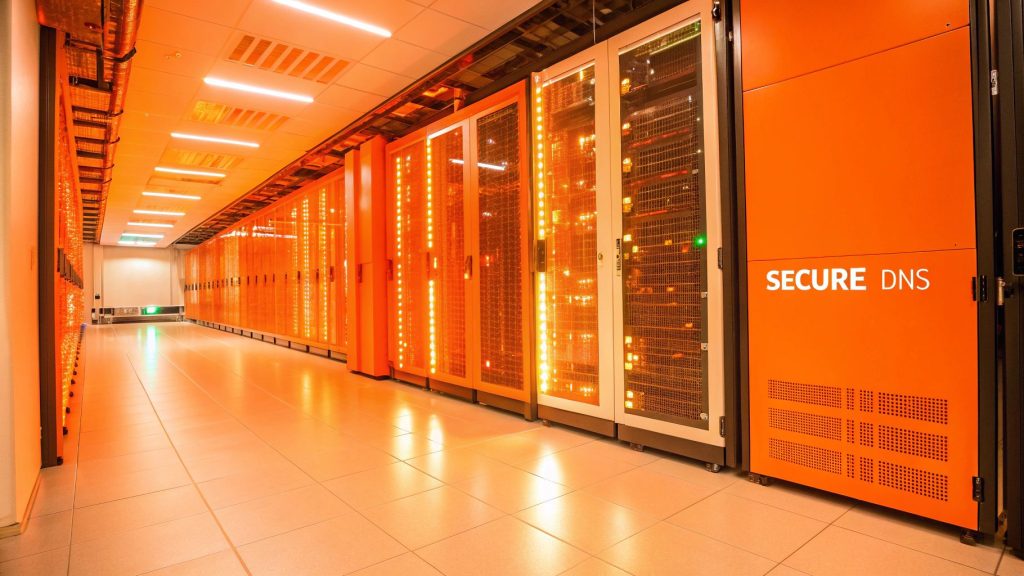Why Traditional DNS Security Isn’t Enough Anymore

The Domain Name System (DNS) has long been the internet’s directory, converting website names into IP addresses that computers can understand. While standard security tools like firewalls help protect network edges, they leave the core DNS system exposed to attacks. This basic security gap means that malicious actors can still find ways around these defences by targeting DNS directly.
The most serious weakness is that traditional DNS has no built-in way to verify responses are legitimate. Without authentication, attackers can easily poison DNS caches by inserting false information that sends users to dangerous websites. It’s similar to a fake road sign directing drivers down the wrong path – people think they’re heading to their destination but end up somewhere completely different.
The slow adoption of DNSSEC security remains concerning, especially for major domain zones. The Netherlands’ .nl domain leads with 60% DNSSEC deployment thanks to financial incentives. However, only 4.33% of .com domains use DNSSEC as of 2024, leaving millions of popular websites vulnerable to DNS-based attacks.
The Rise of Sophisticated DNS Attacks
DNS attacks have evolved far beyond simple website redirects. Today’s attackers use DNS channels to steal sensitive data, launch denial-of-service attacks, and even bypass multi-factor authentication systems. These advanced techniques highlight why traditional security falls short – firewalls can’t stop DNS-based attacks because they don’t fix the root problem of missing authentication.
DNSSEC: Adding a Layer of Trust
DNSSEC addresses this by adding digital signatures that verify DNS responses are authentic and unaltered. When your system queries a DNSSEC-enabled server, it can confirm the response is legitimate rather than a forgery. This effectively blocks cache poisoning attempts – like adding a tamper-evident seal to those road signs. Network administrators can use tools like Verisign to verify their DNSSEC setup is working properly.
Why the Hesitation?
Some organisations delay DNSSEC adoption due to concerns about deployment complexity. However, while initial configuration requires some work, modern services like those from QOXY make implementing and managing DNSSEC much simpler. Given the growing sophistication of DNS-based attacks, the security benefits far outweigh the setup effort, making DNSSEC an essential part of any organisation’s defence strategy.
Mastering DNSSEC Deployment Without the Headaches
Implementing DNSSEC effectively goes beyond just technical knowledge – it needs a clear, structured approach that works in real-world conditions. When you’re dealing with existing systems and limited resources, breaking down the process into clear steps makes it much more manageable. Let’s walk through the key elements of successful DNSSEC deployment: key management, zone signing, and validation.
Key Management: The Foundation of DNSSEC
Just like protecting the keys to your house, securing DNSSEC cryptographic keys is essential. Good key management means having solid processes for creating, storing, and updating your keys regularly. Automated systems work best here since they reduce human error and handle key rotation automatically. For example, QOXY offers built-in key management tools that take care of these tasks for you. This frees up your IT team to focus on other important work instead of manual key management.
Zone Signing: Securing Your DNS Data
Once your keys are set up properly, you’ll need to sign your DNS zones. This step adds digital signatures to your DNS records – similar to putting an official seal on important documents. These signatures prevent attackers from tampering with your DNS responses and sending users to fake websites. For larger organisations with many zones, it helps to start small. Begin with less important zones to practice and perfect your approach before moving on to critical systems.
Validation Testing: Ensuring Everything Works
Testing thoroughly before and after DNSSEC goes live is crucial for success. Think of it as doing a test run before opening day – you want to catch any issues early. Use tools like Verisign to check that your DNSSEC setup works correctly and signed zones resolve as they should. It’s also smart to set up ongoing monitoring that watches your DNSSEC implementation and alerts you if problems come up.
DNSSEC Deployment Checklist & Ongoing Monitoring
Follow this simple checklist for your deployment:
- Key Management: Secure key generation, storage, and automated rotation.
- Zone Signing: Phased approach, starting with less critical zones.
- Validation Testing: Thorough testing before and after deployment.
- Monitoring: Continuous monitoring of DNSSEC status and performance.
Remember that DNSSEC needs regular attention to stay effective. Keep an eye on your setup through active monitoring so you can fix problems quickly before users notice. Review your configuration regularly and update it to handle new security threats. With good monitoring and support from providers like QOXY, you can maintain strong DNSSEC security without constant stress and complications.
QOXY DNSSEC panel make it easy to manage your DNSSEC configurations, if you made a mistake, simply remove the record and repeat the process again.


